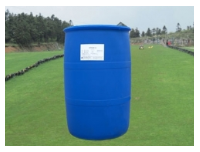Surfactants are special structural molecules with hydrophilic and lipophilic groups, so they have a series of application functions, and are widely used in various fields of plastic industry as auxiliaries.
The application of surfactant in the antistatic agent of plastics plastics is a kind of high polymer material with good electrical insulation performance, but when plastics are used as insulating materials, its surface is very easy to friction and generate static electricity, which will lead to fire, explosion, electric shock and other accidents. Static electricity can be effectively eliminated by adding surfactants to plastics as antistatic agents.

The water-based cleaning agent is a mixed system with surfactant as the main active component and other additives. Surfactants have a great influence on the cleaning process, such as: ① surfactant can destroy the action bond between metal surface and dirt; ② surfactant can wet the metal surface, so that the cleaning liquid can surround the dirt particles; ③ surfactant can make animal and vegetable oil emulsified into small drops, dispersed in the solution; ④ surfactant can dissolve solid dirt particles; ⑤ surfactant can disperse all kinds of dirt to prevent re deposition. Changing the chemical composition of surfactant will change its function in every step of cleaning process.
Surfactants as cleaning agents can destroy the interaction between dirt particles and metal surfaces, but their wetting, penetration and emulsifying ability may not be good enough. Therefore, water-based cleaning agents are often equipped with several different surfactants at the same time. The selection of surfactants is also related to the cleaning process. For example, low foam cleaning agent is required in spray cleaning process, good anti redeposition cleaning agent is required in ultrasonic cleaning, and high emulsification and humidity cleaning agent is required in pipeline cleaning.
The metal surface cleaned with water-based detergent often adsorbs a layer of surfactant molecules, which may affect the next process, especially for the components of oxygen supply system. Therefore, the cleaned metal parts must be rinsed with a large amount of deionized water to remove the adsorbed surfactant. For the cleaning of oxygen supply system components, easy desorption surfactant should be used.